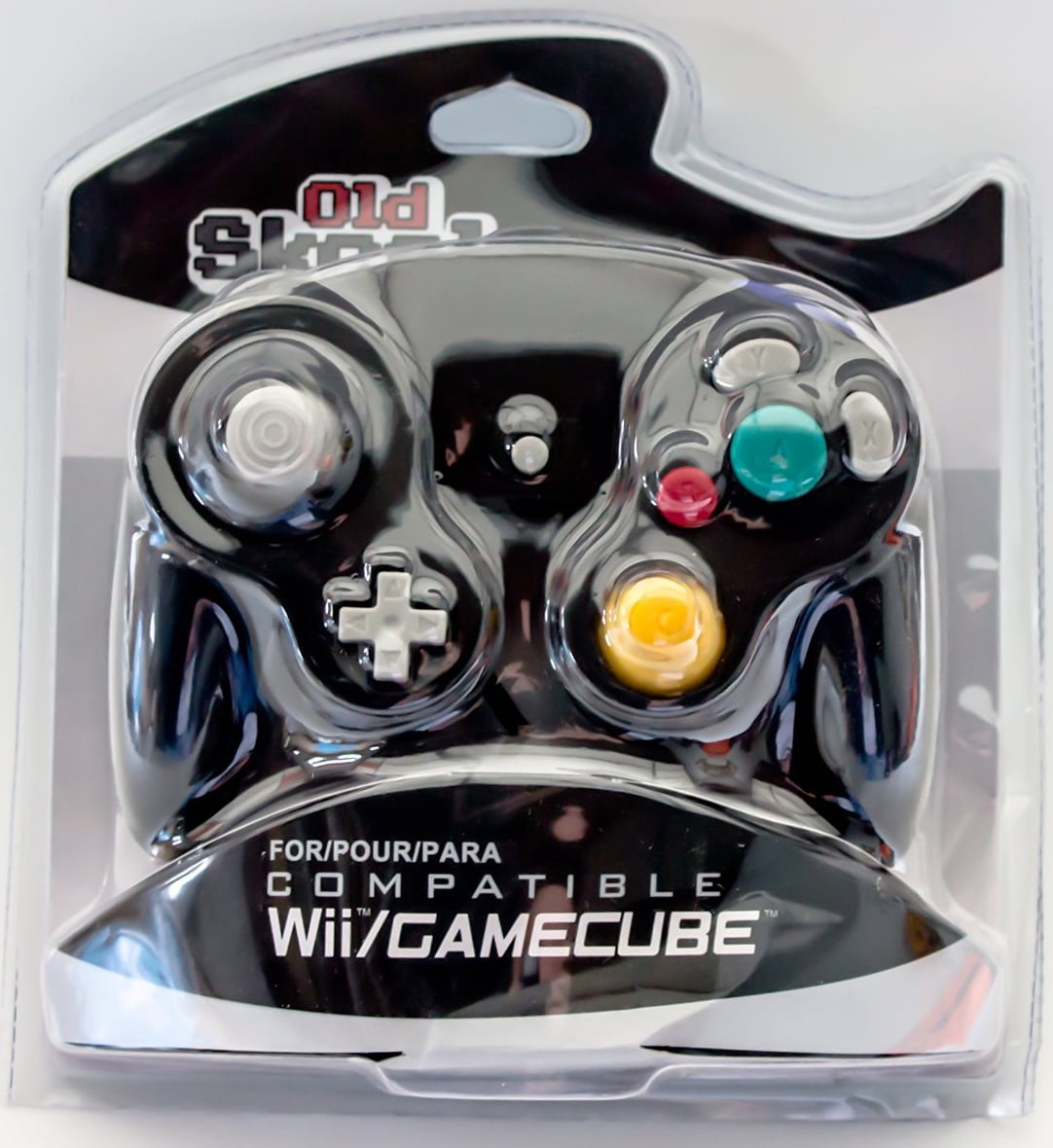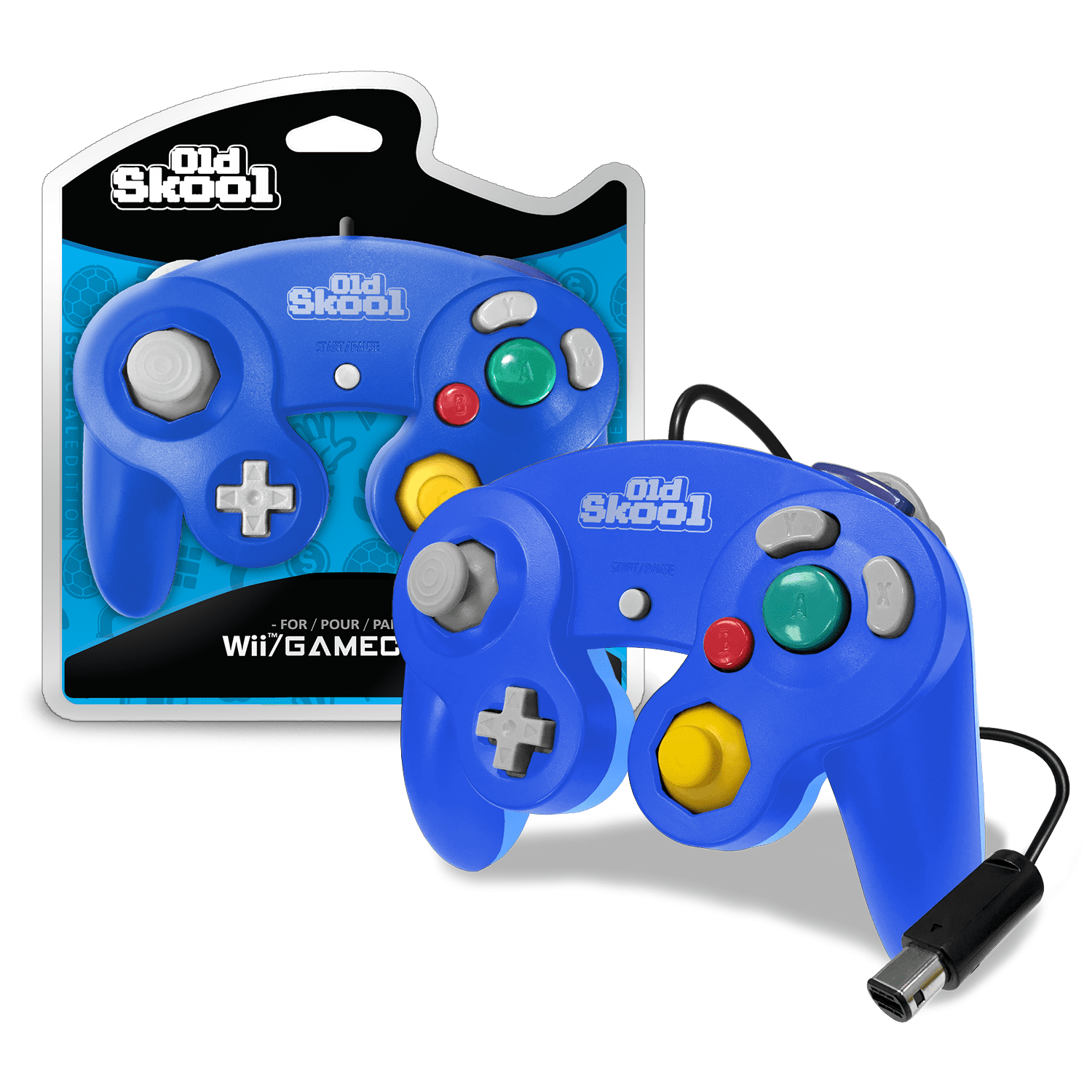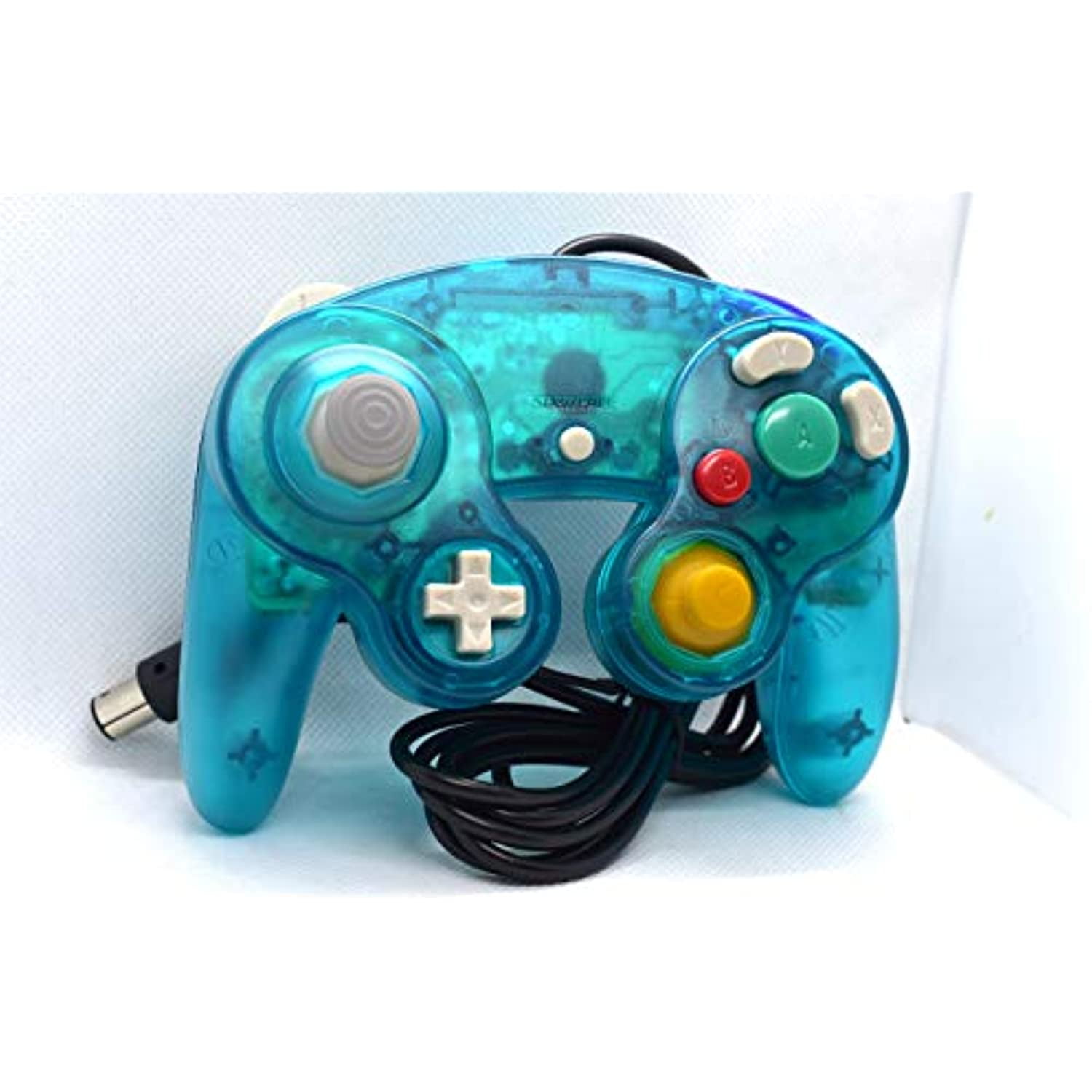

The "Mario" design was also made available in limited quantities through the European Stars Catalogue for 5000 points.

Club Nintendo controllers could be purchased for 500 points each and designs included "Mario" (red top and blue bottom), "Luigi" (green top and blue bottom), "Wario" (yellow top and purple bottom) and a "Club Nintendo" controller (white top and light blue bottom). Nintendo released a number of limited edition controllers in Japan through Club Nintendo, which featured a unique color scheme and/or logo in the center. Other standard colors sold separately included "Spice" (Orange), "Indigo/Clear" (Indigo top with a clear translucent bottom), "Emerald Blue" (Turquoise), and White those two colors are available exclusively in Japan. Standard colors included "Indigo" (dark royal purple), "Jet Black", and "Platinum" (Silver), which were bundled with their respective colored GameCube consoles and sold separately in many countries.

The GameCube controller was sold in several different colors over the console's lifespan. Versions Colors and designs Standard editions This method effectively serves to provide two functions per button without actually adding two separate physical buttons. The L and R triggers feature both analog and digital capabilities: each behaves as a typical analog trigger until fully depressed, at which point the button "clicks" to register an additional digital signal. On the "shoulders" of the controller are two pressure-sensitive analog triggers marked L and R, as well as one digital button marked Z which sits in front of the R trigger. A Start/Pause button is located in the middle of the controller. The four face buttons are on the right side of the controller with a large green A button in the center, flanked by a smaller red B button to its bottom left and two kidney-shaped buttons to its right ( X) and top ( Y) below the face buttons is a yellow C stick. The primary analog stick is on the left, with the D-pad below it. The controller features a total of six digital buttons, two staggered analog sticks, a directional pad and two hybrid analog and digital triggers. Also unlike its predecessor, it does not feature any expansion capabilities. The standard GameCube controller provides haptic feedback by way of a built-in rumble motor rather than using an external Rumble Pak add-on like the Nintendo 64 controller. It connects to the console's controller ports via a 2 m (6 ft 7 in) cable. This controller was bundled with all new GameCube systems throughout the console's life cycle and was also available separately. Released alongside the GameCube console, the standard GameCube controller has a wing grip design. Indigo GameCube controller from various angles community after the release of the critically-acclaimed Super Smash Bros. Ultimate, due to the persisting popularity of the GameCube controller in the Super Smash Bros. Years after the GameCube's discontinuation, Nintendo officially re-released the controller, with the international launch of the fourth and fifth installments of the Super Smash Bros. The GameCube controller continued to endure even beyond its system's launch cycle, gaining varying levels of support from its subsequent successor consoles. Though many elements of the GameCube controller's unique design were not embraced by many future twin-stick gamepads (such as the pressure-sensitive shoulder buttons and a face button layout that emphasizes one button over three others), some controllers adopted its staggered analog stick layout. A wireless variant of the GameCube controller known as the WaveBird was released in 2002. The contentious M-shaped design of its predecessor was replaced with a more conventional handlebar style controller shape a second analog stick was added, replacing the C buttons with a C stick and the X and Y face buttons, last seen on the Super Nintendo controller, were reintroduced the shoulder buttons were changed to hybrid analog triggers. As the successor to the Nintendo 64 controller, it is the progression of Nintendo's controller design in numerous ways. The GameCube controller is the standard game controller for the GameCube home video game console, manufactured by Nintendo and launched in 2001.


 0 kommentar(er)
0 kommentar(er)
